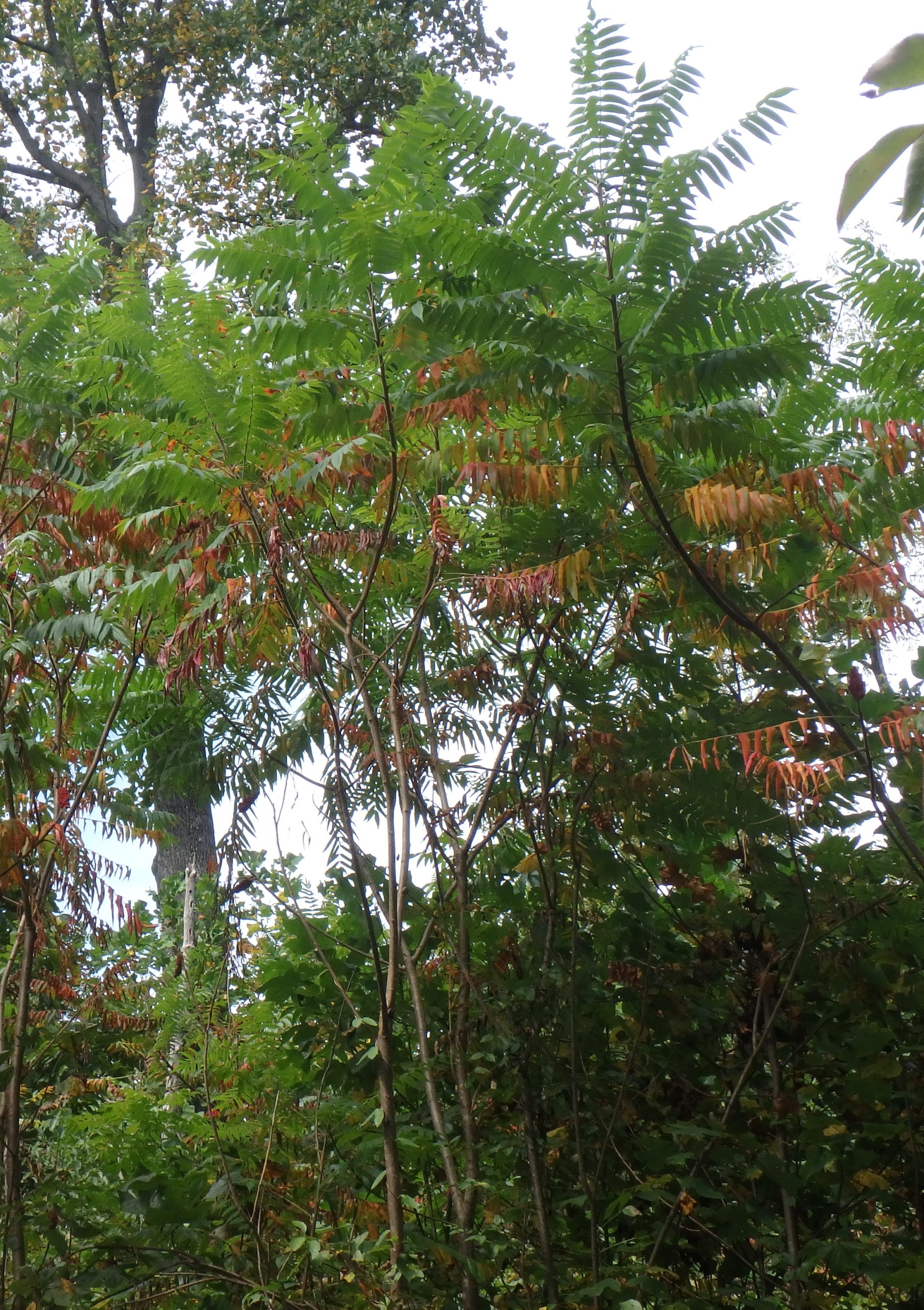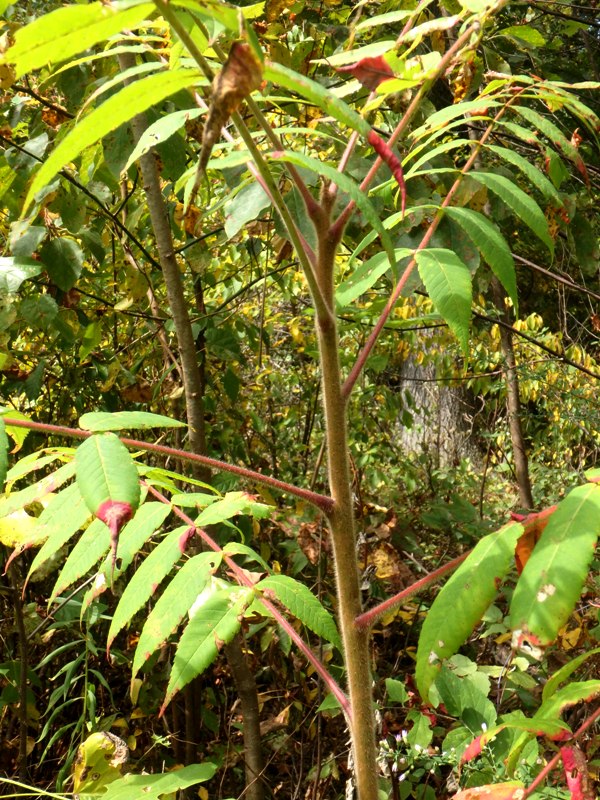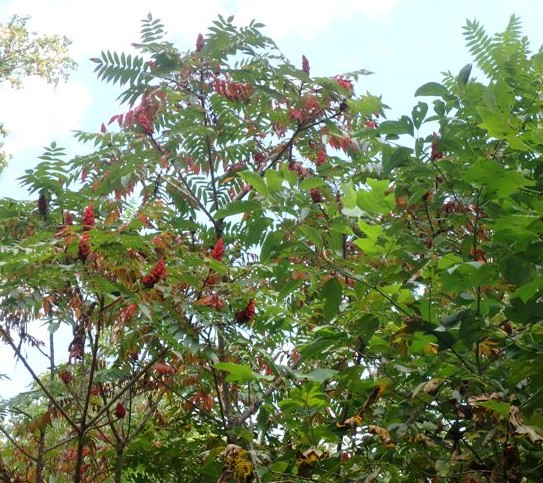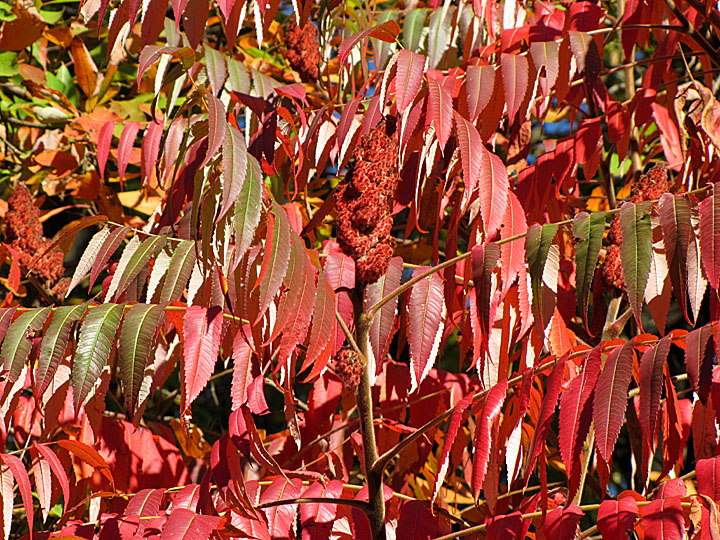Mariton: Sumac Clones
by Tim Burris, Preserve Manager

Staghorn Sumac Tim Burris
Another species that clones is the Staghorn Sumac (Rhus typhina). This species is getting a lot of attention now because it slightly resembles Ailanthus altissima or Tree of Heaven. Tree of Heaven is the host tree for the adult stage of the Spotted Lanternfly. I’ll talk about that tree species in another blog, because it is also a clonal species.
First, a word about poison sumac. I come across numerous people that hear sumac and instantly think Poison Sumac (Toxicodendron vernix). The juice in Poison Sumac is particularly strong and causes extreme reactions. Fortunately, most people will never encounter this plant. Professor Sakai would say, “When you’re stuck waist deep in a swamp, the sickly shrub that you reach for to pull yourself out is Poison Sumac.” It was a great identification aide, and I’ve only ever seen it in that location. However, over the decades, I’ve been stuck in numerous swamps and even looked for this shrub, but have only seen it a handful of times. The average person will never be exposed to Poison Sumac.

Fuzzy stem – or – staghorn Tim Burris
Now back to Staghorn Sumac. The “staghorn” in its name comes from the velvet stems that resemble a buck’s summer antlers. (There is also a Smooth Sumac Rhus glabra.) This is a shrub, but I’ve seen it get several inches in diameter. Right now its leaves are turning a brilliant orange and/or scarlet. It is spectacular in the fall. Besides the foliage, there are brilliant red berry clusters at the ends of branches.

Sumac “Berries” Tim Burris
Staghorn Sumac, like other clones, forms a noticeable “dome” if allowed to expand on its own. You can often see these domes in the medians of expressways. When riding on I-78 or Rt. 33 find the characteristic color of sumac, then look for the classic dome of a clone. It is such a graceful shape in the landscape.

Fall Sumac color. Photo by Carole Mebus
Staghorn Sumac is another species that likes lots of sunlight and is an early woody plant to move into disturbed areas or poor soil. After Hurricane Sandy, I had planned to plant Staghorn Sumac. Since it expands both above and below ground, I knew this would be a great species to compete with non-native invasive plants. Imagine my surprise and joy when I found it popping up on its own in the areas most impacted by Sandy. Like aspens, it will recede when other trees shade it out, but we will have a decade or two to admire it before that happens.
